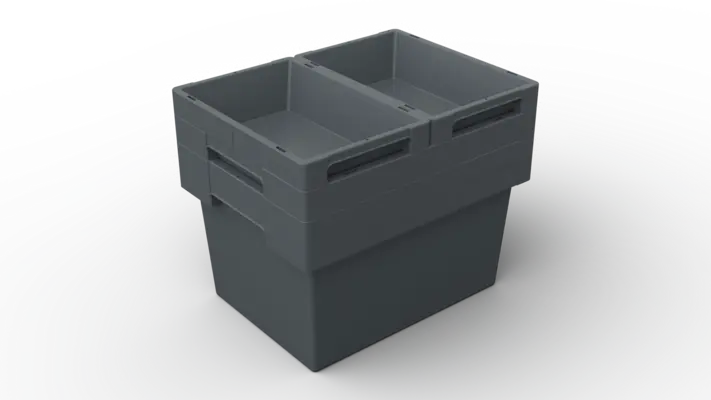New DIN SPEC provides guidance for suppliers and producers of reusable bulk packaging in the food trade
DIN SPEC 10026 was developed as part of the project "Unpackaged 2.0 - Standards for the professionalisation of packaging-reduced, efficient and sustainable supply of goods in the unpackaged trade" at the Department of Sustainable Business Management at Eberswalde University for Sustainable Development (HNEE), which is funded by the Deutsche Bundesstiftung Umwelt (DBU). It defines requirements for the use of reusable packaging for dry products that do not require refrigeration.

The illustrations show designs of the reusable containers developed in accordance with DIN SPEC 10026 in various sizes and with special attention to compatibility as well as stackability and nestability.

The illustrations show designs of the reusable containers developed in accordance with DIN SPEC 10026 in various sizes and with special attention to compatibility as well as stackability and nestability.

The illustrations show designs of the reusable containers developed in accordance with DIN SPEC 10026 in various sizes and with special attention to compatibility as well as stackability and nestability.
The topic of packaging reduction is highly topical in society and is playing an increasingly important role for consumers and packaging producers. Awareness of reusable packaging is growing, particularly in the food retail sector. Reusable solutions are already established in many areas of food retail and transport, e.g. for vegetables, bread and meat. They exemplify a more active implementation of the waste hierarchy enshrined in the German Circular Economy Act by saving resources and reducing packaging waste through recycling.
The aim of unpackaged shops is a food trade with the aim of completely avoiding packaging. While sales packaging can be dispensed with at the point of sale thanks to food filling stations ("bulks") and customers' own containers, disposable large paper containers, plastic film and woven bags are still often used for deliveries. To ensure consistent implementation of the unpackaged concept, individual suppliers to the unpackaged retail trade have started to develop their own solutions for their value chain. Instead of using disposable large containers, they deliver their non-refrigerated product range - such as preserved and processed fruit, nuts, cereal products, spices/herbs and their products and mixtures - to their retail partners in deposit-paid buckets with a capacity of up to 22 litres. As these solutions are only reusable to a limited extent and a suitable standardised reusable system for transporting such products without additional packaging materials was previously lacking, DIN SPEC 10026 was developed.
With the involvement of numerous companies and associations, a standard was developed that specifies the requirements for the use of a reusable container (see image) for products that do not require refrigeration. The entire product life cycle from production to recycling was taken into consideration. The standard consistently implements the circular economy and promotes efficient trading processes.
The free DIN SPEC 10026 provides potential reusable system providers, producers of plastic products, dishwashing service providers and food companies with a basis for a scalable reusable system as a substitute for numerous single-use bulk packaging.
Market participants need to be brought together and suitable areas of application identified for implementation. The participating companies in particular have already expressed their interest in developing a DIN SPEC-compliant solution.
DIN SPEC 10026 can be pre-ordered under this link.
Further information is available at:
- Project: "Unpackaged 2.0 - Standards for the professionalisation of packaging-reduced, efficient and sustainable goods supply in unpackaged retail value chains"
- "How food retailers can avoid single-use packaging" - A scientific reader on the reduction of plastic packaging in the food trade. Plastic packaging in the food trade. OEKOM Verlag, Munich.
Note on image material
The photos available here may be used in the context of reporting. Please note the copyright notice © Georg Utz GmbH, Schüttorf